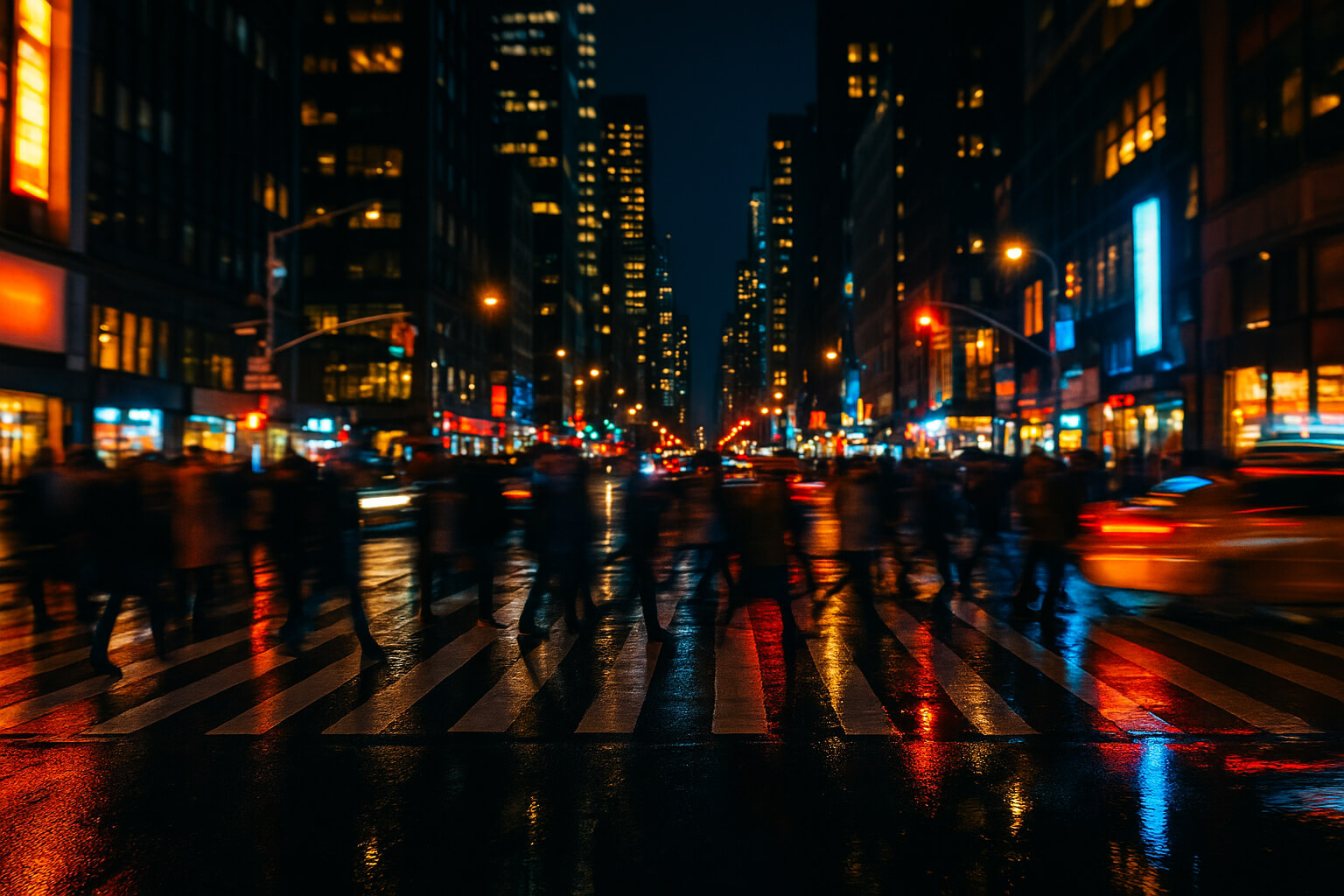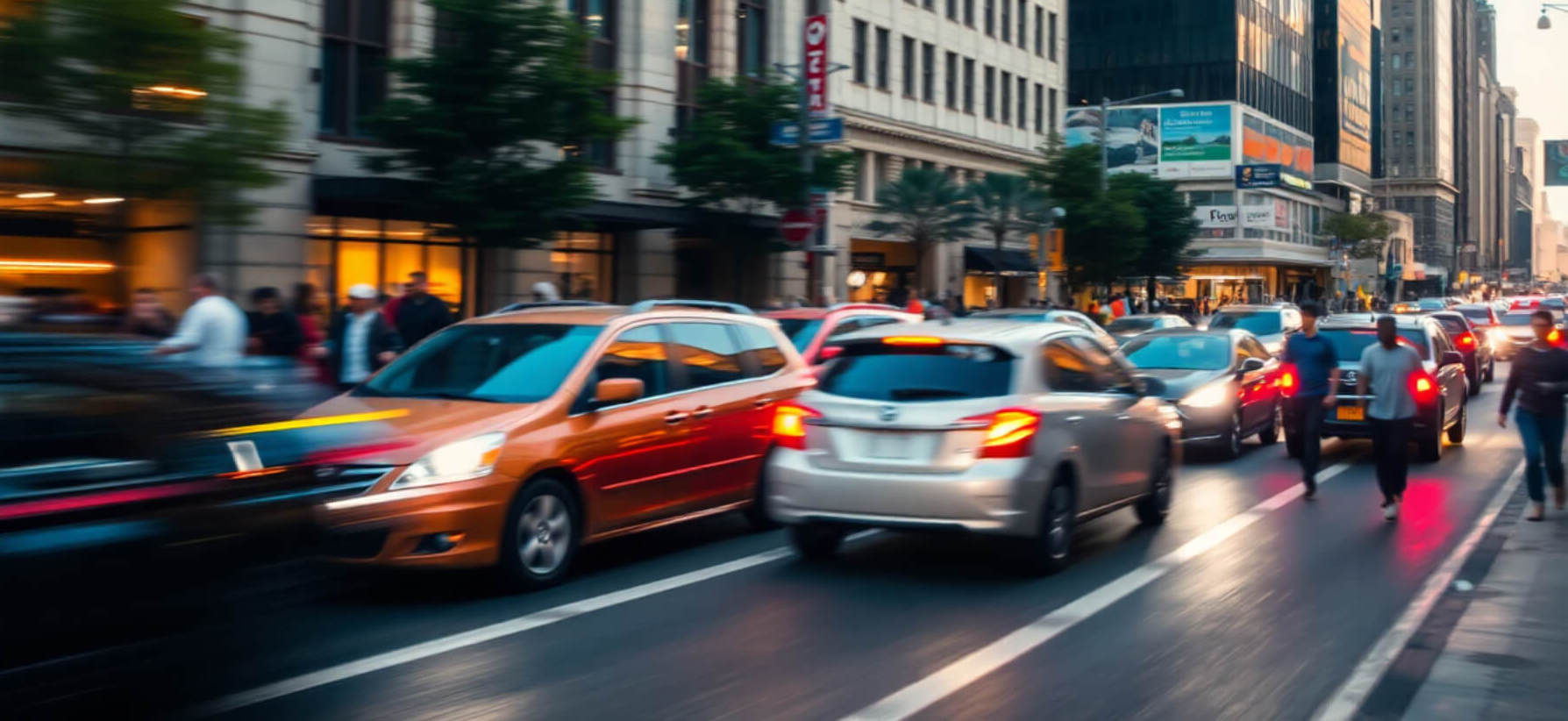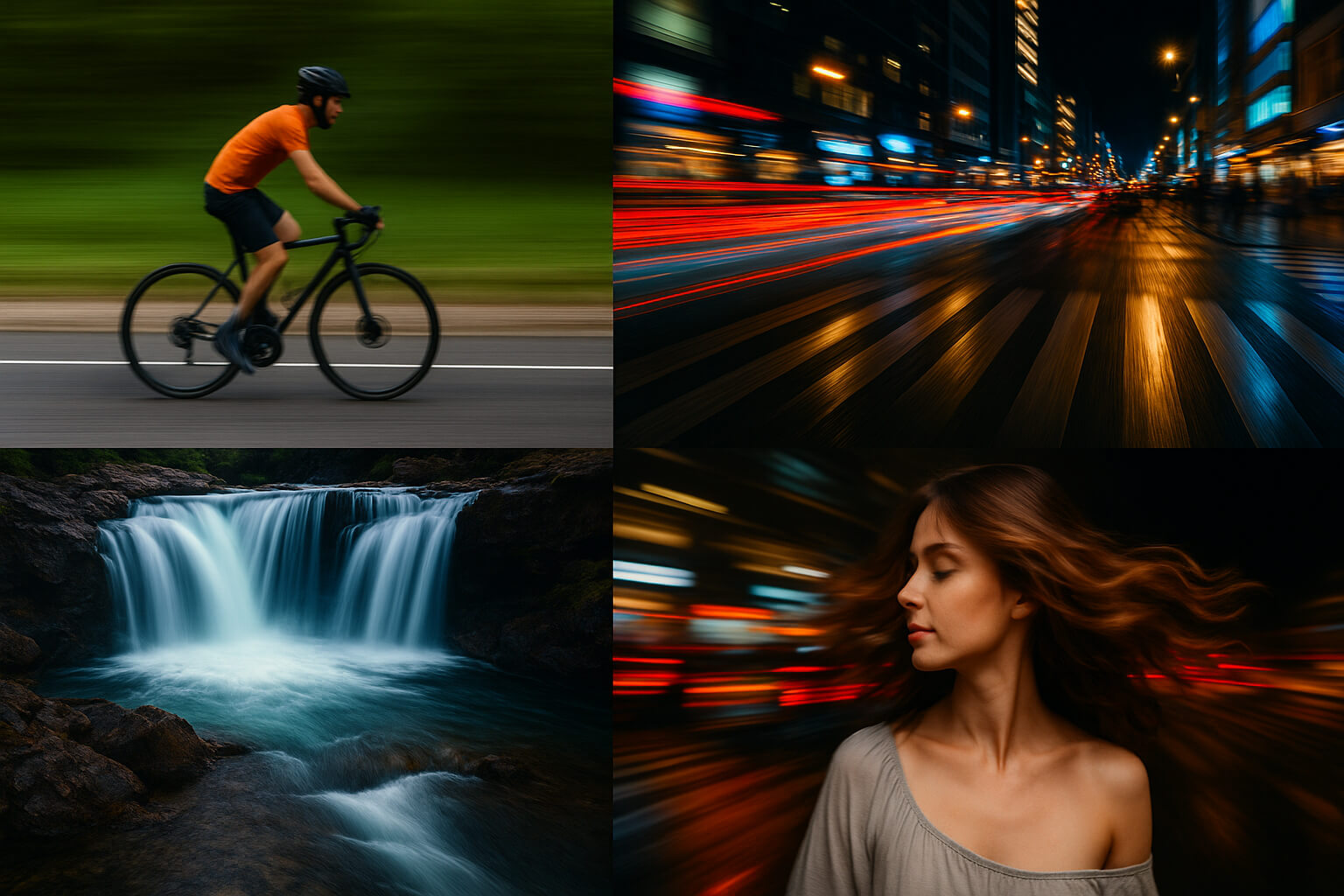May 21, 2025

In photography, blur doesn’t always mean a mistake. When used intentionally, motion blur can transform simple movements into breathtaking art. Whether it's the streak of a dancer's limbs, light trails across a highway, or waves crashing into the shore — motion blur adds emotion, energy, and story to your image.
This creative guide explores how to master motion blur photography, drawing insights from professional techniques, editing tools, and artistic approaches inspired by cinematic styles, artistic exposure methods, and pro-level editing workflows.
Motion blur occurs when a moving subject appears blurred in the photo, which is achieved by using a slower shutter speed. The result is a streak or smudge of movement that contrasts against the stillness of the rest of the scene. Depending on how the shot is composed and the speed of the moving subject, the blur can be subtle or dramatic.
In both cases, motion blur allows photographers to convey more than just a "frozen" moment; it gives a sense of time and energy, allowing the viewer to feel the motion within the frame. Whether you’re capturing the fast-paced rush of city life or the fluidity of nature, motion blur helps you express the dynamic qualities of a scene.
Similar to Long Exposure Waterfall Photography, you can use slower shutter speeds to smooth motion, but with creative framing and lighting, it becomes storytelling.

1. Movement and speed : Long exposure photography captures movement over time, turning dynamic scenes into flowing, smooth representations of speed. A moving car, for example, can leave behind a streak of light, or flowing water might transform into soft, silky lines. This conveys the sense of energy and fluidity, adding depth and excitement to an otherwise still scene.
2. Dreamlike art : By capturing time and motion, long exposure blurs the boundaries of reality, turning everyday scenes into something surreal. For instance, a busy city street may turn into a canvas of streaked lights and abstract shapes, evoking a dreamlike atmosphere. This transforms the mundane into something poetic and visually captivating.
3. Mood and atmosphere : Rather than focusing on sharp details, long exposure emphasizes the overall mood of a scene. A soft blur of lights or motion captures the feeling of a moment—whether calm, eerie, or chaotic—without being bogged down by literal accuracy. It’s about evoking emotion through atmosphere.
4. emotions : Long exposure photography can evoke various emotions by manipulating movement. It can create a sense of energy or chaos, like streaked lights in a bustling city, or serenity, like smooth, calm waters. It’s a tool that helps convey the emotional tone of a scene, whether it’s full of life or quiet stillness.
Much like in Cinematic Wedding Photography, emotion is central — motion blur becomes the visual poetry that enhances storytelling.
To create the right kind of blur:
Use a tripod for camera stability — check out options in Best Tripods for Travel and Studio Photography.

Editing tips from Color Grading vs Correction can help refine tones and give mood to motion-blurred images.
These images often appeal to stock buyers, art collectors, and editorial clients for their cinematic, timeless feel.
To monetize your creative blur work, refer to:
Motion blur is more than just a technique — it’s a style. It adds atmosphere, pace, and emotion to your frames. Embrace experimentation, adjust your settings with intention, and above all, let movement become your muse.
Stay up to date with the newest tips, gear reviews, and step-by-step guides to elevate your photography journey from home and beyond.